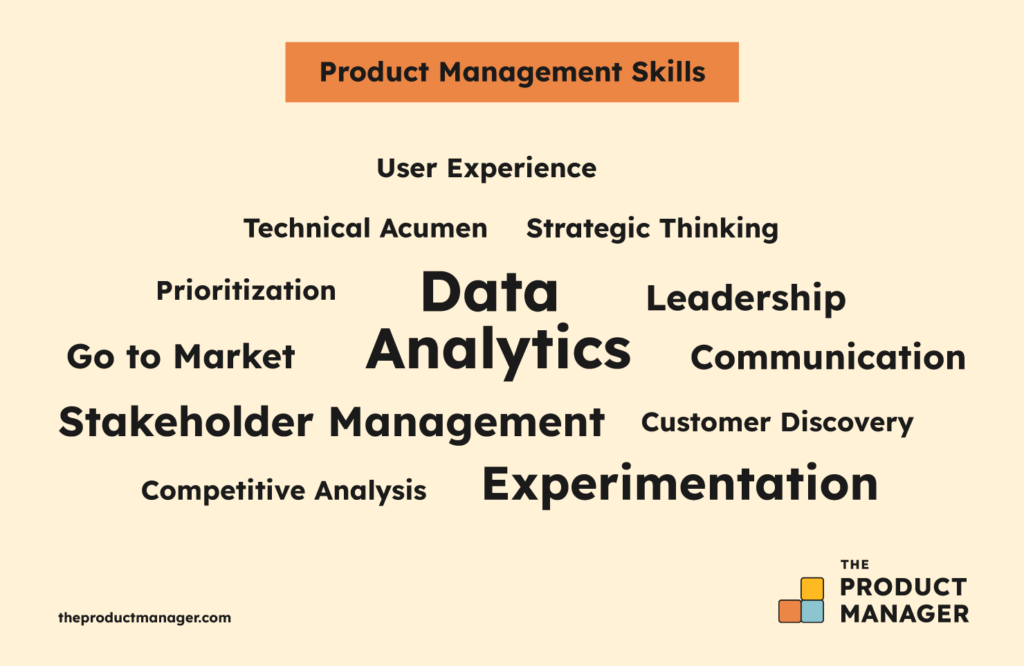As the product management discipline has grown more popular, so have the number of specialities and sub-disciplines within it. You’ve probably heard of many of these specialities already, including Technical Product Management, Platform Product Management, Data Product Management, etc.
An up and coming speciality in the world of product is the growth product manager, who is specifically focused on improving particular business metrics, such as revenue, customer acquisition or activation, customer retention, etc. Often, these goals are pursued within the context of experimentation—or in other words, launching something new.
In my own experience, I quickly came to find that many of the skills I had honed and practiced while working on mature products were less effective when thrown into the unknown world of “growth.”
Just how different is the role of the growth product manager from traditional product management, and what should you expect when moving into a growth product management role? Stay tuned to find out.
Why All The Fuss Around “Growth Product Management?”
(It’s all about product-led growth.)
When a new professional speciality becomes mainstream, there are usually market forces behind the shift. The growth product manager role has increased in popularity along with product-led growth, a strategy often pursued at startups, and some large organizations particularly in the SaaS space, such as Uber, Airbnb, Square and Twilio.
Product-led growth refers to a product that “sells itself,” as opposed to relying on sales-oriented growth. This means that the product’s features are at the center of customer acquisition and expansion. Free trials, a DIY onboarding process, incentives to invite friends and content marketing are all examples of product-led growth strategies.
Within both small and large organizations, product-led growth teams are generally tasked with improving specific goals or metrics, which often comes down to launching something new or launching experimental features across many existing products.
For example, a business looking to expand into a new customer demographic may dispatch a growth product team to identify new features or products to help them break into that market.
If you’re a traditional product manager looking for a new challenge, you might find yourself working on a “growth” product. But, prepare yourself. While the skills of traditional product management are definitely transferable, you may find yourself facing some new challenges for the very first time.
So, how can a traditional product manager—also known as a core product manager—make the shift to being “product-led?” Keep reading to learn about the key differences between Growth Product Management and Traditional Product Management.
What Are The Key Differences Between Traditional Product Management And Growth Product Management?

The Shift from “Customer” Value to “Business” Value
The biggest challenge for me, when making the transition from traditional product management into growth product management, wasn’t an absence of skills (though I definitely had some up-skilling to do). Rather, I found it most difficult to shift my mindset from considering the end user to be my primary stakeholder to considering the business to be my primary stakeholder.
This essentially meant solving business problems by solving customer problems, which can be a tough line to walk.
As a traditional product manager, your focus is on driving value for the customer. It’s almost assumed that doing so will simultaneously drive value for the business. However, as a growth product manager, the business is your primary stakeholder and your primary goal is to align customer value with business value.
Organizations that seek out growth product managers may have discovered that, for some reason, driving value solely for their customers in the way they’ve always done is not driving the commercial results they hope to achieve. That’s where the Growth PM comes in.
A Growth PM must aim to bring customer value and business value back into alignment by identifying which methods of creating value for customers also helps the business achieve its goals.
Go-To-Market Strategy
As a growth-driven product manager tasked with launching experimental products and features, your role will be inherently more intertwined with your company’s go-to-market strategy. This is because your focus is skewed towards helping the organization achieve its commercial goals.
A growth product manager’s role will more often involve bringing minimum viable products to market, testing out pricing strategies and A/B testing different messaging tactics, as opposed to building out a long-term product roadmap for a mature product.
If you’re new to the world of marketing and commercialization, the right tool can make all the difference. Check out a list of the best product marketing tools here.
Data Analysis Skills
If you have yet to notice, being data-driven and having well-honed quantitative skill sets are critical to the success of growth product managers. Much like “growth marketing” or “growth hacking” roles, growth product managers are often tasked with improving specific business metrics and optimizing products to help organizations achieve specific goals.
These can fall within a wide range, but often include items such as revenue, customer acquisition, customer retention, increased web traffic, or expanding market share in some other capacity.
This requires growth product managers to look deep into the product data to understand which actions move the needle on the company’s commercial goals…and which ones don’t.
In cases where growth PMs are tasked with bringing something new to market, this skillset may need to include creating a “data baseline” for a new product, feature, or customer segment. This can be a tricky task, as data becomes truly valuable when you have a historical dataset against which to make comparisons.
Growth PMs often find themselves in the ambiguous position of finding creative ways to derive meaningful insights from data while they work to build up a statistically relevant historical dataset.
Experimentation
Experimentation is at the heart of every growth PM’s role. In fact, the opportunity to run experiments is one of the main reasons many product managers make the transition into growth product management in the first place.
A growth product manager’s days are marked by the results collecting in their A/B testing tools, the feedback from the last survey they launched, and the click-through rates on the last feature they released.
All of these actions provide insight into what strategies are effective at driving value for the business and which ones are not. Those who are successful in this role have a high appetite for ambiguity and thrive in environments with many unknowns.
Appetite for Failure
Another challenging aspect of the growth product manager’s role is the high rate of failure a PM might experience in their day-to-day.
A large part of the growth PM role is testing hypotheses by engaging in “trial-and-error” type initiatives to see what works and what doesn’t. Therefore, growth product managers should prepare themselves to be wrong a good portion of the time.
In addition to their own appetite for failure, it’s important for growth PMs to recognize whether the organization they work for has a high or low appetite for failure.
Working on experimental projects in a company with a low-risk culture can make the role that much more challenging.
For this reason, it’s important to ensure you’re aligned with your leadership team on the expectations of your position before accepting it.
What Transferable Skills Are Relevant When Moving From Traditional Product Manager To Growth Product Manager?
Customer Discovery
Just because the growth PM’s primary stakeholder is the business doesn’t mean they can throw user experience and product design out the window.
If business goals are reached without consideration for customer needs, a business would quickly lose all its customers. That’s why the growth PM focuses instead on bringing customer value and business value into alignment.
It can be a tricky line to walk, and can occasionally feel like a betrayal of your customer-oriented product roots.
However, for all you traditional PMs looking to move into a growth role, you’re probably already an expert in customer discovery and design thinking best practices.
A great place to start is leveraging these design frameworks for running product ideation workshops.
Storytelling
Communication skills are a key ingredient in leading successful cross-functional teams. To take it a step further, inspiring storytelling techniques have recently come to the forefront of the long list of skills required to be an effective product manager.
As a former writer and communications professional, I’m excited to confirm that storytelling skills are just as important, if not even more important, for growth product managers.
The nature of “growth” projects means that growth PMs are always rallying support for their initiatives. This constant lobbying often requires them to sell their teammates and leaders on their product vision.
Qualitative Feedback
Lastly, growth product managers can often be so focused on digging into the data that they forget about the value of picking up the phone and actually talking to customers.
Don’t get so caught up in pursuing data points that you forget that your customers are real people with real pain points who enjoy talking about their problems just as much as anyone else.
Remember that quantitative data will tell you “what” you’re trying to solve, but only qualitative data can truly reveal the “why.”
If getting a hold of real customers proves challenging, there are many ways to obtain high-quality qualitative feedback from customer proxies.
Some of your best sources of feedback will often be the support and customer experience teams, the sales teams, marketing teams and other stakeholders who work directly with customers.
Will All Product Managers Eventually Become “Growth” Product Managers?

There are many reasons why an organization might hire a growth product manager, including but not limited to;
- Failure to achieve its revenue goals
- Struggle to acquire and retain new users or customer segments
- An inability to hit key success metrics in other ways.
It’s worth noting that with the move towards product-led growth and the gradual shift away from large sales teams, many have begun to wonder whether the responsibilities of the growth product manager will eventually be consumed by traditional product managers, or “core PMs." While the jury is still out on that one—my personal opinion is that this is already taking place.
There are a number of reasons for this. First, the shift to agile product development has forced PMs away from taking a waterfall methodology approach. Instead, organizations are prioritizing speed to market, MVPs, experimentation, and data analysis (many of the core skills of the growth product manager).
Furthermore, in a digital world where monetization has become more nuanced and multifaceted than ever before, many businesses are beginning to realize that satisfying the customer at all costs does not inherently benefit the business.
As a result, organizations have started to hold their product delivery organizations accountable for business outcomes in addition to customer-focused initiatives.
Therefore, whether you move into growth product management by choice or back into it by necessity (like I did), it can’t hurt to brush up on some of the core skillsets of this fledgling product discipline.
If you enjoyed this article, be sure to check out our newsletter for the industry-leading product management content!


